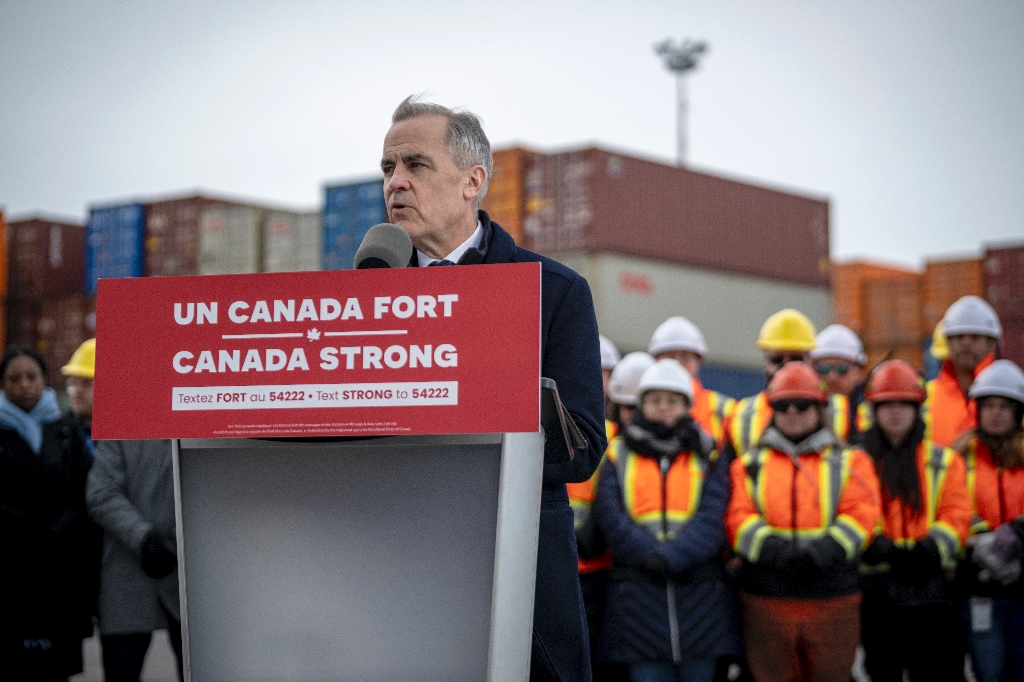(AFP) – The United States on Thursday announced sweeping new rules requiring coal-fired plants to eliminate nearly all their carbon emissions or commit to shutting down altogether, a keystone of President Joe Biden’s agenda to confront the climate crisis.
Hailed by environmental groups as a “gamechanger,” the regulations take effect from 2032 and will also mandate that new, high capacity gas-fired plants slash their carbon dioxide output by the same amount — 90 percent — a target that would require the use of carbon capture technology.
It comes as Democratic incumbent Biden faces a tough election rematch against Republican Donald Trump in November, with climate action seen as key to galvanizing youth and progressive voters.
US power plant emissions have been declining in recent years, thanks to a drop in the cost of renewables. But the power sector remains the second largest source of US greenhouse gases, accounting for a quarter of the total produced by the world’s largest economy. Fossil fuel plants also emit other forms of air pollution that disproportionately impact vulnerable communities.
“We are committed to the integrated priorities of ensuring US energy security, protecting people from pollution and fighting the climate crisis,” Environmental Protection Agency (EPA) chief Michael Regan told reporters.
The agency’s analysis estimates the rules will prevent 1.4 billion metric tons of carbon entering the atmosphere through the year 2047, equivalent to nearly one year of total greenhouse gas emissions from the power sector in 2022.
“The days of unlimited carbon pollution are over,” said Lori Bird, director of the US Energy Program of the World Resources Institute. “This rule is a massive step forward in the Biden Administration’s efforts to fight the climate crisis.”
It comes after the administration unveiled tough new vehicle emissions standards, which Bird praised as a powerful “one-two punch.”
– ‘It’s historic’ – A draft proposal was first published last year, attracting criticism from the industry but also concern from some environmental groups that believed the reductions needed to come sooner and go further. There were also worries it encouraged the use of carbon capture to achieve the reductions, a technology still in its infancy and which allows fossil fuel plants to continue to dump other pollutants on vulnerable communities, climate justice groups say.
The final rule is weaker in some ways and stronger in others, compared to the proposal. Coal plants have two more years to come into compliance, but the emissions reductions will apply to all coal plants that don’t have firm commitments to retire by 2039, which is a year earlier than the draft envisaged. The new version also lowers the threshold by which new gas plants are considered “high capacity” and are covered by the toughest measures, but rules regarding existing gas plants will only be announced later this year.
“It’s historic, it’s a relief and it is such a joy to know that this is coming,” Margie Alt of Climate Action Campaign told AFP, adding that Biden’s government “will by every measure have done more to limit climate pollution than any other administration ever in the history of this country.”
But the rule was slammed by industry groups and Republicans, with legal challenges likely to come.
“For the last three years, the administration has methodically developed and executed a comprehensive strategy to force the closure of well-operating coal plants,” said Rich Nolan, president and CEO of the National Mining Association.
Alongside the carbon rules, the Biden administration also finalized three new regulations slashing mercury, water pollution and ash discharges from coal plants. Former president Barack Obama first tried to regulate the power sector a decade ago, but the Supreme Court ruled his plans were too broad and exceeded executive branch authority. – Issam AHMED
© 2024 AFP




